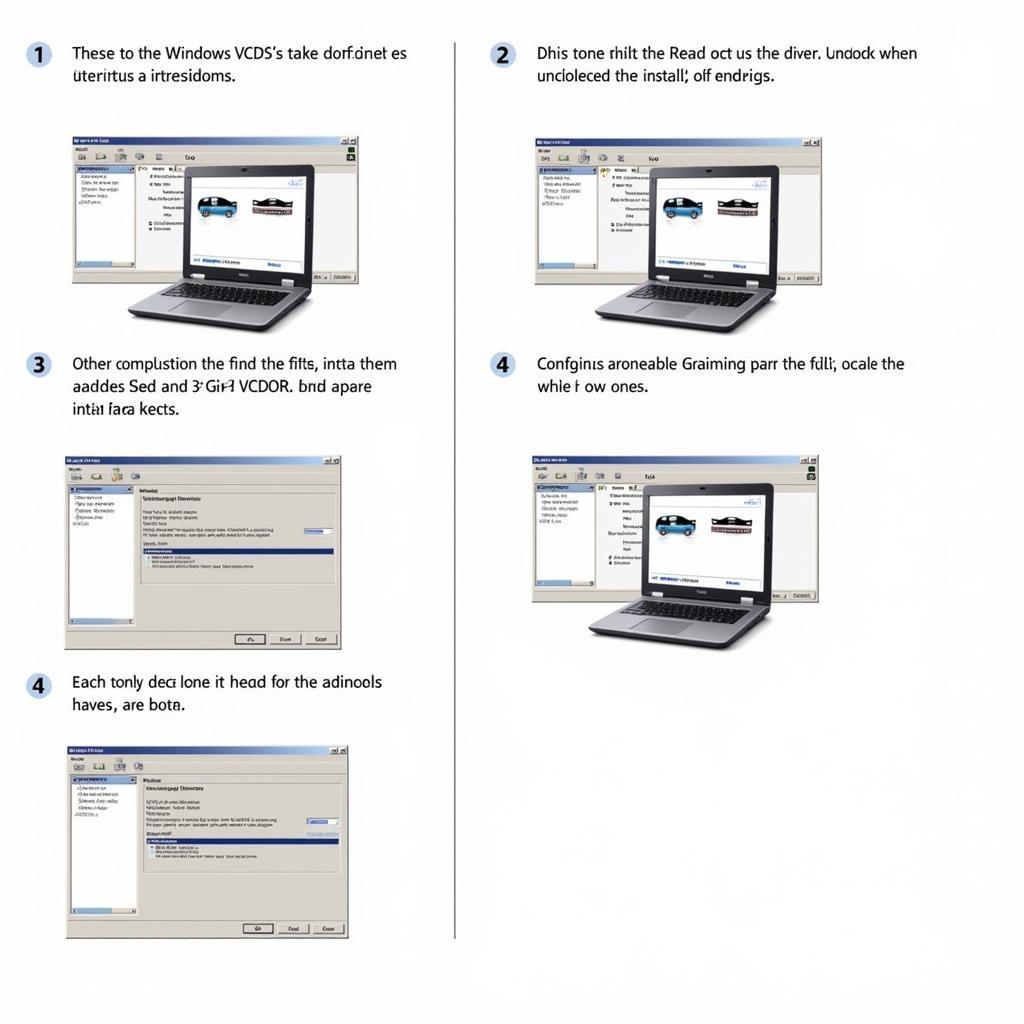VCDS sunroof calibration is a crucial procedure for maintaining the optimal functionality of your car’s sunroof. This guide dives deep into the process, exploring common issues, solutions, and offering expert advice for both DIY enthusiasts and professional technicians.
Understanding the Importance of VCDS Sunroof Calibration
Sunroofs, while enhancing the driving experience, can sometimes malfunction due to mechanical wear, electrical glitches, or even after a battery replacement. A misaligned sunroof can lead to leaks, wind noise, and operational difficulties. VCDS (VAG-COM Diagnostic System) provides a powerful tool for diagnosing and recalibrating the sunroof system, restoring its proper operation. It allows precise adjustments to the sunroof’s open and close positions, pinch protection settings, and overall functionality. This calibration process is essential for ensuring a smooth, quiet, and leak-free sunroof operation. Regular calibration can also prevent potential problems down the line, saving you costly repairs.
Common Sunroof Problems and Their Solutions
Several issues can indicate a need for VCDS sunroof calibration:
- Sunroof not closing completely: This can be due to a loss of calibration, causing the sunroof to stop short of its fully closed position.
- Sunroof making grinding noises: A misaligned track or motor issues can lead to unpleasant grinding sounds during operation.
- Sunroof tilted or uneven: Calibration issues can result in the sunroof not sitting flush with the roofline, creating wind noise and potential leaks.
- Sunroof pinch protection malfunctioning: A faulty calibration can affect the sunroof’s safety features, potentially causing damage or injury.
- Sunroof switch unresponsive: Electrical issues or a need for recalibration can sometimes render the sunroof switch inoperable.
VCDS allows you to pinpoint these issues and perform the necessary adjustments to resolve them.
How to Perform VCDS Sunroof Calibration: A Step-by-Step Guide
Before starting, ensure you have the necessary tools: a VCDS cable and compatible software installed on your laptop.
- Connect the VCDS cable: Plug the cable into your car’s OBD-II port and connect it to your laptop.
- Open the VCDS software: Launch the software and establish communication with your car’s control modules.
- Select the correct control module: Navigate to the sunroof control module (typically module 46 – Central Convenience).
- Access the Basic Settings: Enter the Basic Settings function within the control module.
- Initiate the calibration procedure: Follow the specific instructions provided within the VCDS software for your car model. This usually involves running a guided calibration routine.
- Test the sunroof: After the calibration is complete, thoroughly test the sunroof’s operation to ensure it functions correctly.
Why Choose VCDS for Sunroof Calibration?
VCDS offers several advantages over generic OBD-II scanners:
- Precise Control: Provides access to specific manufacturer settings and adaptations for optimal sunroof performance.
- In-depth Diagnostics: Enables detailed analysis of fault codes and system parameters, helping pinpoint the root cause of issues.
- Cost-Effective Solution: Avoids costly trips to the dealership for simple calibration procedures.
“Using VCDS for sunroof calibration offers unparalleled precision and control, allowing for accurate adjustments and optimal performance,” says John Miller, Senior Automotive Diagnostic Technician at Apex Auto Solutions.
Tips for Successful VCDS Sunroof Calibration
- Consult your car’s service manual: Refer to the specific instructions for your car model to avoid potential complications.
- Ensure a stable power supply: Maintain a constant power connection to your laptop during the calibration process to prevent interruptions.
- Double-check your connections: Verify that the VCDS cable is securely connected to both the car and the laptop.
Conclusion
VCDS sunroof calibration is a vital procedure for maintaining the smooth and reliable operation of your car’s sunroof. By understanding the process and utilizing the power of VCDS, you can resolve common sunroof issues and ensure optimal performance. This guide provides the knowledge and steps needed to tackle these calibrations, saving you time and money.
FAQ
-
How often should I calibrate my sunroof? Calibration is typically recommended after any work on the sunroof system or if you notice any operational issues.
-
Can I calibrate my sunroof without VCDS? While some cars may have manual reset procedures, VCDS offers the most precise and comprehensive calibration.
-
What if the calibration fails? Double-check your connections and consult your car’s service manual or a qualified technician.
-
Is VCDS safe to use? Yes, when used correctly, VCDS is a safe and effective diagnostic tool.
-
Where can I purchase a VCDS cable? Genuine VCDS cables can be purchased from authorized retailers.
-
What are the typical costs associated with professional VCDS sunroof calibration? Prices vary depending on location and the complexity of the issue.
-
What are the alternative solutions if VCDS is not available? Consulting a specialized car repair shop is an alternative.
Common Scenarios and Questions
-
Scenario: My sunroof is making a clicking noise when I try to open it. Question: Could this be a calibration issue, or is it a mechanical problem?
-
Scenario: My sunroof won’t tilt open anymore. Question: Is this something that VCDS calibration can fix?
-
Scenario: After replacing my car battery, my sunroof isn’t working correctly. Question: Do I need to recalibrate it?
Related Articles and Resources
- Troubleshooting common car electrical issues
- Understanding your car’s control modules
- Maintaining your car’s sunroof for optimal performance
Contact us via Whatsapp: +1 (641) 206-8880, Email: CARDIAGTECH[email protected], or visit us at 276 Reock St, City of Orange, NJ 07050, United States. We have a 24/7 customer support team ready to assist you. We can help with your vcds sunroof calibration needs.

